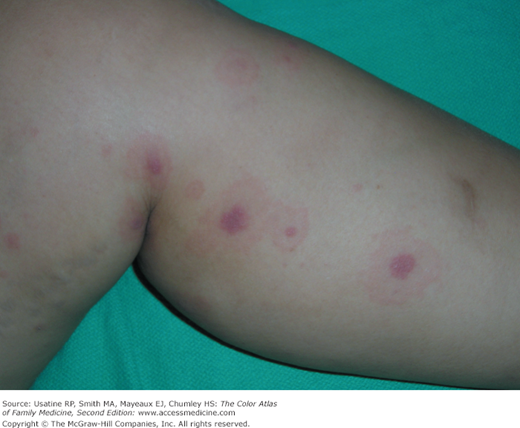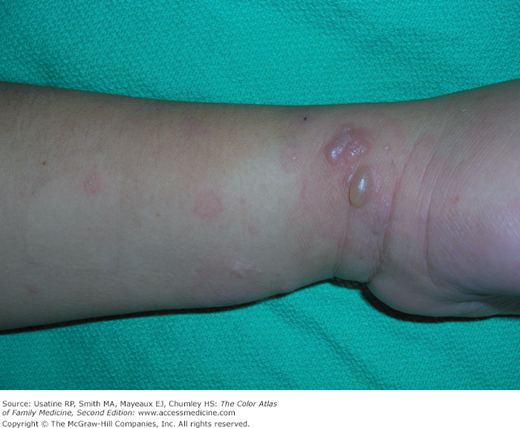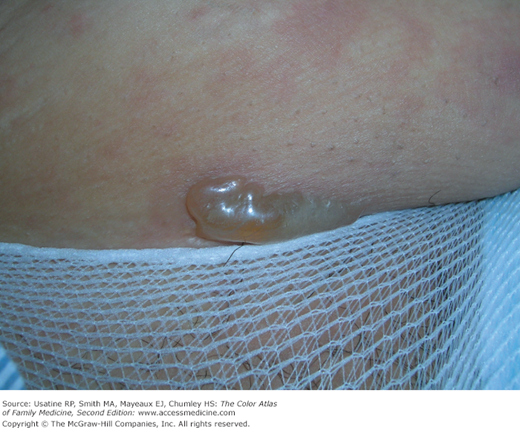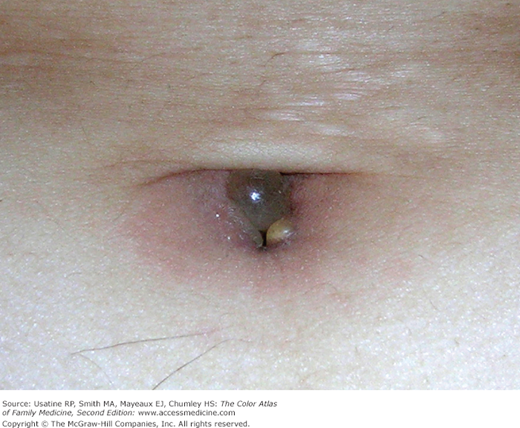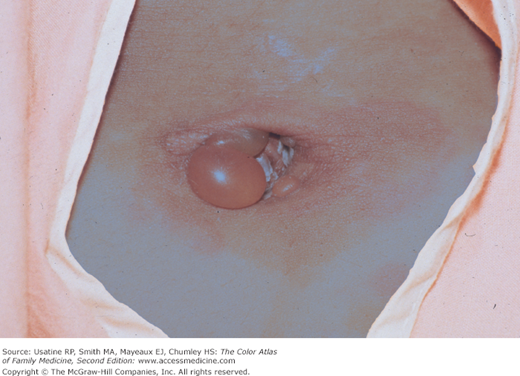Patient Story
A 37-year-old pregnant woman presented to the hospital with severe preeclampsia. After all medical methods were tried and failed to control her severe preeclampsia, a joint decision was made to induce labor to save the life of the mother. The pregnancy was too early for the fetus to survive. The following day she began to develop the lesions seen in Figures 76-1, 76-2, 76-3, and 76-4. A diagnosis of pemphigoid gestationis was made. Her past history includes antiphospholipid syndrome with multiple pregnancy losses but two live children. This was her third episode of pemphigoid gestationis. A photograph of her previous episode is included to see how similar the periumbilical bulla was to her current episode of pemphigoid gestationis. A new biopsy was not performed given that her previous biopsy was on file and the clinical picture was consistent with a recurrence of this disease. She was treated with oral prednisone and began to improve rapidly (Figure 76-5).
Introduction
Pemphigoid gestationis is a rare autoimmune bullous dermatosis of pregnancy. The disease was originally known as herpes gestationis because of it visual similarities to herpes simplex infection. However, that term has fallen out of favor because pemphigoid gestationis is not associated with active or prior herpes virus infection.
Epidemiology
- Pemphigoid gestationis is a rare disease that occurs in 1 in 1700 to 1 in 50,000 pregnancies.1,2
- Pemphigoid gestationis has an estimated prevalence of 1 case in 50,000 to 60,000 pregnancies in the United States.
- It has been linked to the presence of human leukocyte antigen (HLA)-DR3, HLA-DR4, or both.3
- It is rarely associated with molar pregnancies and choriocarcinoma.3
